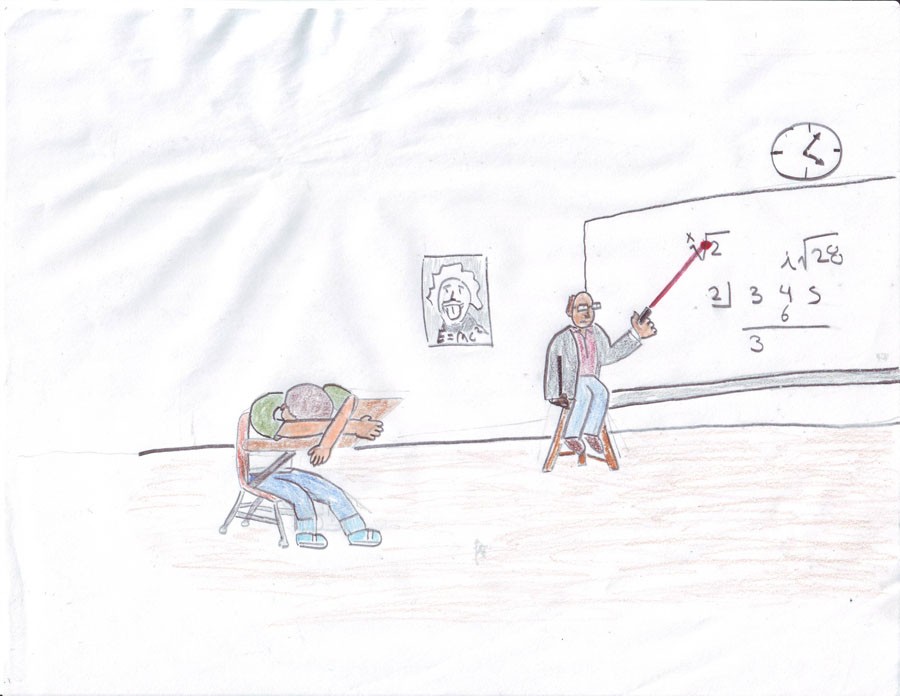Senioritis spreads among students
SATIRE
Earlier this week, hazmat suits swarmed Osceola as the school was placed under quarantine due to an outbreak of the highschoolis senioritis virus, commonly known as senioritis. According to Center for Disease Control Spokesman I.L.L. Ness, the current strand of senioritis is highly contagious. “Our efforts to combat the disease have been extremely slow,” Ness said. “We attempted to isolate the afflicted, but by the time we have put the patient in isolation, the disease had already been spread to innumerable people.”
Dr. Dunot Work discovered highschoolis senioritis in 1924, in the lab of the University of California, Santa Barbara. However, as Work discovered senioritis on the Friday before his 3-day weekend, he disregarded the finding and did not report his discovery until 1930, when Dr. Work brought up the finding in a conversation with UCSB’s president while trying to explain why Dr. Work hadn’t performed any research for the past 6 years. In the 1990s, highschoolis senioritis mutated, with the best known strands being middleschoolis senioritis and collegium senioritis. Senioritis is still primarily found among high school seniors, although isolated cases have been reported among juniors, sophomores, and freshmen. While adults over the age of 22 cannot get catch highschoolis senioritis, the virus can still trigger an allergic reaction in teachers, causing lenience and excessive toleration toward patients affected by senioritis.
Highchoolis senioritis is considered highly contagious. The most common method of transmission is having a conversation with a person who is afflicted with senioritis. Some researchers believe there is a genetic component; people who have a sibling with senioritis have a 75% higher chance of getting the disease themselves, according to studies from the University of Iowa.
There is currently no cure for senioritis. “The CDC has been working on a vaccine for senioritis for decades,” Ness said. “Our research into a senioritis vaccine has been shelved due to the Ebola outbreak, but we are still formulating new treatment options for the highschoolis senioritis virus.” Ness explained that he does not know of any effective treatment options. Contrary to a popular misconception, long speeches by parents and teachers have been proven to be ineffective in numerous double-blind, randomized controlled trials. The same goes for seminars, guilt trips, grounding, and revoking Internet privileges. According to Ness, the only option for controlling senioritis is to isolate patients before they infect others, and wait until senioritis passes, which usually occurs around the first day of freshman year of college.
As of now, the CDC reports that the virus is only 2% contained. “It is impossible to exaggerate how difficult it is to combat the disease,” Ness said. “Regardless, we are not wavering, and we will not stop fighting until every high school student understands the value of a good work ethic.”
According to USF Microbiology professor I.M.X. Pert, “senioritis’s effects are diverse and quite harmful.” While Pert emphasized there are varying degrees of senioritis, he said that the primary symptoms of senioritis are:
- Inability to use a writing utensil
- Inflated sense of self-worth
- Inability to carry any amount over 4 pounds, or roughly equivalent to two binders
- Decreased ability to reason
- Reduced motivation to excel academically
- Increased motivation to sleep
- Decreased motivation to do work of any kind
COMMENT BELOW IF YOU THINK YOU HAVE CONTRACTED SENIORITIS.
Your donation will support the student journalists of Osceola Fundamental High School. Your contribution will allow us to purchase equipment and cover our annual website hosting costs.


